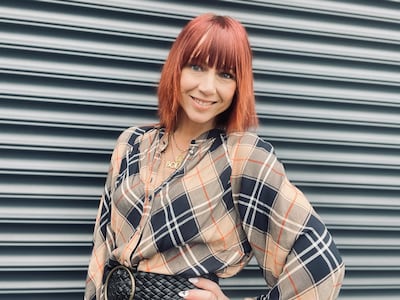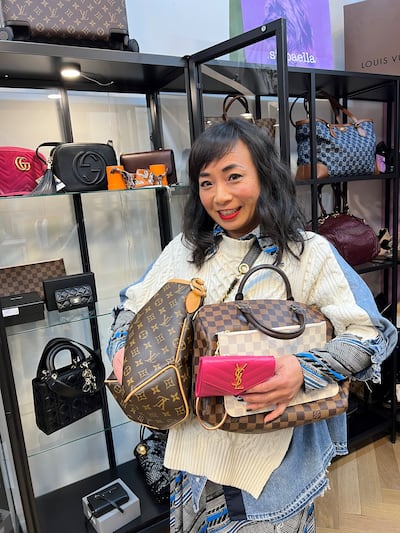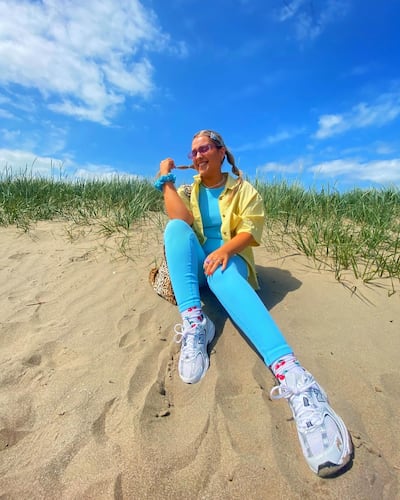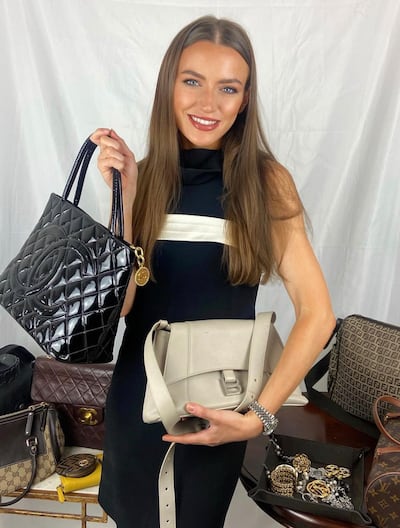Spring has enthusiastically sprung which, for lots of us, means clearing out the wardrobe, getting rid of old clothes and replacing them with brand new clobber. After the pandemic many people had drawers bursting with office-wear that would never again see the inside of an office, or outfits that no longer suited our changed lifestyles.
While it may be tempting to replace your old gear with new items, this approach is increasingly difficult to justify. In a world where 10 per cent of annual global carbon emissions come from the fashion industry, 300,000 tonnes of textile waste go to landfill each year and buying just one white cotton shirt produces the same emissions as driving 50km in a car, it pays to be more mindful about replenishing your wardrobe.
This is why the buying, selling and exchanging of preloved clothes has become increasingly popular. Not only is it kinder to the environment but with the cost-of-living crisis pinching many pockets, it can be a money saver too.
Buying and selling second-hand clothes and accessories can – let’s face it – feel a bit overwhelming if you’ve never tried it before. For those who have yet to dip their toe in the preloved arena, it can be a minefield figuring out the most effective way to sell that dress that never fit, or that gorgeous handbag you never actually use. Here are some tips to help you get started, and a list of the best outlets around.
READ MORE
Choose your outlet wisely
Not every outlet suits every person. What you’re selling and how much time and effort you wish to commit will both inform your choice. Devotees of designer fashion might try the likes of the Sustainable Studio or Luxury Exchange, two Irish online boutiques which sell your preloved luxury items for you.

Gayle Poppers, founder of The Sustainable Studio, says that Louis Vuitton, Gucci, Chanel and Dior are all hugely popular at the moment. “Chanel bags, the older ones, have actually gone up in value and quality,” she says. “The leather actually gets softer over time.”
[ The clothes swappers combatting fashion waste, one skirt and shirt at a timeOpens in new window ]
Caitríona McGettigan of Luxury Exchange says that the range of items she sells is quite wide – from Spanx leather leggings to Tommy Hilfiger pieces and Dolce and Gabbana dresses. “We have items from €40 up to €4,000. It’s not like we’re a normal shop where they might be targeting a certain age group. Because we’re getting such varied brands, styles and price points, it means that we have everybody as a customer, which is great.”

Perhaps the most well-known Irish reseller of preloved designer fashion is Siopaella. Founded in 2011 by Ella de Guzman, the store runs regular swap shops, where you can swap preloved pieces for store credit (which you can spend that day in-store). Users who download the Siopaella app will be notified of when these events are taking place. “We’ve actually recycled over 140,000 pieces since we opened,” says de Guzman. “But in the last year specifically we’ve seen a big surge in clothing sales as a response to people wanting to be more sustainable in their shopping habits.”
Whether or not your clothing has a luxury label attached, there’s an outlet for you – be it the juggernaut clothes resale app Depop or the clothes swapping app Nuw. Founded by Irish businesswoman Aisling Byrne, Nuw allows you to use your clothes as currency: you upload an item, earn coins, and use these coins to redeem a “nuw” piece.
“You get gold coins or silver coins, depending on the standard of the item, and then you can use those to swap for other coins,” says fashion Instagrammer Abby Davidson (@thrifty.fantaisie). “So it’s kind of good that it’s not a direct swap for swap because that would make it more tricky to find something you want.”
Fashion Instagrammer Niamh Murray (@fashionfollows_) points out that well known social media platforms can also help sell preloved fashion. “During the pandemic I branched out and created a page called @fashionfollowsvintage. So if it is something that you want to take seriously utilise the platforms that we have. We have so many like TikTok and Instagram. It’s just amazing what you can do on these.”
Learn how to price your items
Sites such as Depop allow users to decide the price of an item but Murray suggests doing research on the brand you’re selling, comparing with others who sell that brand and staying in the middle of the lane. “I would never be the kind of person that would overprice my stuff. I’m a vintage buyer myself so I don’t like to see when the price is severely high.”
She also advises absorbing the cost of postage and packaging into the price you list.
De Guzman points out that reselling items is a good way of evaluating their true value. “When you’re buying clothes new I always say, ‘what is the resale value of that when you’re tired of it?’ If you’re only spending five euro on it it’s disposable.”

Style, photography and presentation of goods is important
While some outlets take professional photographs for you, others leave it to the seller to upload photos. In these instances good lighting is paramount, and Murray suggests investing in a ring light. “It doesn’t have to be a big, large ring light. I have a really small ring light that I use sometimes on the go and it cost me, like, €15.”
Davidson agrees. “Light is the most important thing. No one wants to buy something that’s creased on a hanger and you can hardly tell what colour it is.”
Another thing both Murray and Davidson advise is to upload photos of yourself wearing the piece. “I always prefer, if I’m buying something, to see someone with it on. So therefore when I’m selling something I try to get pictures of me wearing it,” says Davidson. “It’s so easy to just set up a self-timer, or even a mirror photo. I think that helps to make the item look as attractive as possible.”
Videos are another way of making your item shine. “You can put up videos on Depop of you actually moving in the clothes and people like to see that,” says Murray.
Davidson also suggests uploading as many photos as possible, including photos of the item label, “so the buyer can see the size and brand”.
Captions need as much detail as possible
When it comes to captioning, Davidson says the first thing you need to do is to get all the keywords in. “So, colour, brand, size. Have a bit to do with fit – say it’s a sixteen but you think it’s more like a fourteen fit, put that in there.” She then suggests adding further detail. “I would maybe put in, ‘perfect for a summer’s day’, ‘perfect for a holiday’ – that type of thing. Most of these sites have hashtag options so you can hashtag ‘pink’. Hashtag ‘beach’.” Anything that gives the buyer detail about what your selling is helpful.
[ ‘You can’t buy a T-shirt for £1 and not know that is wrong’Opens in new window ]
Don’t skimp on postage and packaging (and keep sustainability in mind)
Some outlets, such as the Sustainable Studio, arrange a courier to collect the item for the seller. Others, such as Luxury Exchange, suggest using registered post. On sites like Nuw the person receiving pays the cost of shipping or users can arrange to meet in person, whereas on Depop the seller will often (though not always) factor the price of shipping into the price of the item.
Murray says that a personal touch can make a difference when sending items. “A lot of my stuff that I would send out through @fashionfollowsvintage, I would put a little sticker or I’d put sweets or something into it, or I’d even put a little personal note. A lot of people react really well to that and end up giving you reviews which boost your page.”
Davidson suggests reusing packaging to cut down on waste. “Every time I buy something second hand I just keep the packaging and reuse it. I wouldn’t ever buy new packaging.”

Keep an eye on the bottom line
There are lots of factors which influence how much an item can make, including the brand and the item’s condition. “The better condition you can keep your clothes in, for me, that’s the big [thing],” says McGettigan. “My top tip would be for people to just really mind their clothes and wash them properly, dry them properly, don’t throw things in the dryer.”
Stores such as Luxury Exchange generally work on a cash, consignment or exchange basis. This means that, depending on the item, you might get a cash offer up front (Spanx Moto style leggings, for example, get €25) or an offer of consignment where you wait until the item has sold to receive payment. The latter will usually earn you a higher cut.
Likewise, exchanging your item for store credit will usually result in a higher offer. “I sold a Louis Vuitton Ellipse recently for €700,” says Poppers. “And she got about half of that – so €350 – and she was very happy. It was just sitting in her cupboard. Some people aren’t and some people are very good at selling online themselves anyway.”
On sites such as Depop an item’s selling power depends on its condition and the popularity of the brand. “I think the easiest things to sell are jackets, boots – Doc Martens, they seem to sell like wildfire,” says Davidson. Often what you make is not cash but an upgrade to your wardrobe. De Guzman gives an example of someone at a recent swap shop who “brought in eight garbage bags [full of clothing/accessories] and walked off with a Chanel bag”.
Five of the best outlets for preloved fashion
Depop: Possibly the most well-known app when it comes to selling clothes online, Depop allows users to list clothing, accessories and other items and earn money via PayPal. It has also evolved into a platform where people set up online stores for their own brands.
Nuw: Formerly known as The Nu Wardrobe, this fashion exchange app allow users to upload items and earn coins, which they use to redeem other items. Recently Nuw has made it possible for listings that aren’t selling on Depop to be transferred across to the Nuw app. Look out for their online swap events where influencers drop items for swapping.
The Luxury Exchange: Founded during lockdown by former Zadig and Voltaire sales specialist Caitríona McGettigan, The Luxury Exchange sells preloved high-end items on their online store. Sellers can email photographs of the items to hello@luxuryexchange.ie with the subject line “quote” and The Luxury Exchange will get back with price lists.
Siopaella: With two stores on Wicklow Street, Dublin, as well as an online store and app, Siopaella sells preloved designer clothes and accessories. Download the app to be notified of their regular swap shop events or follow them on Instagram, where you can attend their weekly Lives.
The Sustainable Studio: Founded by fashion designer Gayle Poppers, The Sustainable Studio specialises in preloved luxury items. Their most sought-after labels are Louis Vuitton, Gucci, Chanel, Dior and Fendi. You can send details of items you’d like to sell via the contact form on their website or via WhatsApp and once the item has been approved and authenticated, they will get back to you with an offer.













